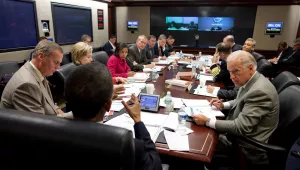Artificial Intelligence: Benefits, Barriers and Risks of Applying AI Against Intelligence and National Security Challenges
The Intelligence Project will host a lunch with Rohan Samaraweera, Belfer Center Recanati-Kaplan Fellow, from 12:00-1:15pm in One Brattle 350.
Lunch will be provided on a first come, first served basis. Please RSVP.


